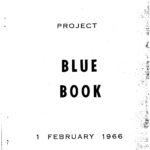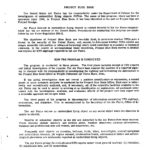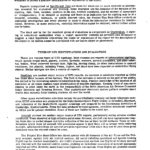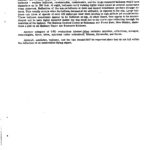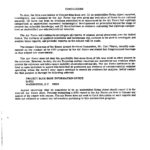

News
US Department of Defense documents reveal wormholes and extra dimensions research
As part of a US Department of Defense (DoD) project named the Advanced Aerospace Threat Identification Program (AATIP), the US government funded research involving wormholes and extra dimensions, according to documents released Wednesday in response to a Freedom of Information Act (FOIA) filed in August 2018. A communication addressed to Senators John McCain and Jack Reed, then-chair of the Senate Committee on Armed Services, provided a list of 38 research papers produced under the program, the titles of which indicated several surprising topics. The research disclosed indicates that the government is just as interested in the application of fantastic sounding technologies as science fiction creators and aficionados.
UPDATE: The correspondence to Senators McCain and Reed was first released to former Deputy Director in the UK’s Directorate of Defense Security, Nick Pope, by the US Defense Intelligence Agency’s Office of Corporate Communications on January 16, 2018. An article published in The Guardian in October last year written by Mr. Pope described his interest in the paper’s release after noting a DIA briefing on AATIP given to a Congressional committee in April according to the Congressional Record. The FOIA request was sought and obtained separately from Mr. Pope’s efforts.
Some of the titles of the publications produced with AATIP funding included:
- Invisibility Cloaking, by Dr. Ulf Leonhardt of Univ. of St. Andrews
- Traversable Wormholes, Stargates, and Negative Energy, by Dr. Eric Davis of EarthTech International
- High-Frequency Gravitational Wave Communications, by Dr. Robert Baker, GravWave
- Antigravity for Aerospace Applications, Dr. Eric Davis, EarthTech International
- Concepts for Extracting Energy from the Quantum Vacuum, Dr. Eric Davis, EarthTech International
- An Introduction to the Statistical Drake Equation, Dr. Claudio Maccone, International Academy of Astronautics
- Space-Communication Implications of Quantum Entanglement and Nonlocality, Dr. J. Cramer, Univ. of Washington
The research indicated may seem unusual for a government program, but AATIP’s $22 million dollar purpose, the existence of which was first reported by the New York Times in 2017, was to investigate foreign advanced aerospace weapons threats. Thus, studies into technologies that have years of development to go before having direct applications would be within the scope of the investigation.
The invisibility cloaking, for example, is based on optical illusions achieved through light manipulation which a foreign entity could utilize in some fashion, and a quick Google search of the report’s author, Dr. Ulf Leonhardt, will lead you to his TED Talk explaining the technology. EarthTech International, the institute responsible for some of the more fictional-sounding technology research, is an organization dedicated to exploring theories and topics as they may apply to develop innovative propulsion and energy sources, most of the members of which have PhDs and backgrounds in theoretical and experimental physics. In other words, the topics are well known in the science community, and the DoD is interested in knowing if there are security threats involving their applicability.
- A summary of the Air Force’s Project Blue Book. | Credit: US Department of Defense/US Air Force
- A summary of the Air Force’s Project Blue Book. | Credit: US Department of Defense/US Air Force
- A summary of the Air Force’s Project Blue Book. | Credit: US Department of Defense/US Air Force
- A summary of the Air Force’s Project Blue Book. | Credit: US Department of Defense/US Air Force
- A summary of the Air Force’s Project Blue Book. | Credit: US Department of Defense/US Air Force
The background of AATIP is perhaps a bit more interesting to the conspiracy-minded than the research topics provided to Congress. The program began in 2007 and supposedly ended in 2012, although that claim is disputed by the program’s DoD participants. Its initiator was former Senator Harry Reid of Nevada, whose longtime interest in space phenomena is well known in the UFO community. Robert Bigelow – the same man whose Bigelow Aerospace company has successfully installed an expandable module on the International Space Station in 2016 – received a majority of AATIP’s funding to study UFO reports. Bigelow is also well-known in the UFO community for his belief in alien Earth visitation. AATIP isn’t the first known expenditure by the US government on unusual technology – the Air Force’s Project Blue Book (1952-1969) investigated similar phenomena and is currently the subject of a History Channel dramatization by the same name.
UPDATE: Mr. Pope, whose background includes a post at the UK Ministry of Defense’s Secretariat (Air Staff) division where he mirrored the type of work done by Project Blue Book, has provided Teslarati with further context for the revealed AATIP research:
“…I’ve been quoted in various media articles discussing the letter I obtained, but wanted to address the main question I’ve been asked, concerning what this new revelation tells us about the true nature of AATIP. The letter describes the AATIP program as being one looking at next-generation aerospace threats. That’s been the way the DOD and DIA have spun this story from day one. Skeptics of some of the more exotic claims made about AATIP say this isn’t spin at all, but an accurate description of the program. Fair enough, but people should also bear in mind that Harry Reid described the program in similar terms in his June 24, 2009 letter to William Lynn III, and Reid has been very clear that yes, AATIP looked at UAP [Unidentified Aerial Phenomena]…People won’t get a definitive answer…unless and until further AATIP paperwork is released.” – Nick Pope, January 2, 2019
The FOIA request revealing the AATIP research papers was filed by Steven Aftergood, director of the Federation of American Scientists’ Project on Government Secrecy, a group dedicated to promoting public access to national security information. It regularly makes FOIA requests for the public’s benefit within this realm and also publishes government documents otherwise undisclosed or hard-to-find related to public or intelligence policy. A visit to the group’s website will provide links to their work through multiple presidential administrations and resource links for anyone interested in delving further into government secrets.

News
Tesla Model 3 named New Zealand’s best passenger car of 2025
Tesla flipped the switch on Full Self-Driving (Supervised) in September, turning every Model 3 and Model Y into New Zealand’s most advanced production car overnight.

The refreshed Tesla Model 3 has won the DRIVEN Car Guide AA Insurance NZ Car of the Year 2025 award in the Passenger Car category, beating all traditional and electric rivals.
Judges praised the all-electric sedan’s driving dynamics, value-packed EV tech, and the game-changing addition of Full Self-Driving (Supervised) that went live in New Zealand this September.
Why the Model 3 clinched the crown
DRIVEN admitted they were late to the “Highland” party because the updated sedan arrived in New Zealand as a 2024 model, just before the new Model Y stole the headlines. Yet two things forced a re-evaluation this year.
First, experiencing the new Model Y reminded testers how many big upgrades originated in the Model 3, such as the smoother ride, quieter cabin, ventilated seats, rear touchscreen, and stalk-less minimalist interior. Second, and far more importantly, Tesla flipped the switch on Full Self-Driving (Supervised) in September, turning every Model 3 and Model Y into New Zealand’s most advanced production car overnight.
FSD changes everything for Kiwi buyers
The publication called the entry-level rear-wheel-drive version “good to drive and represents a lot of EV technology for the money,” but highlighted that FSD elevates it into another league. “Make no mistake, despite the ‘Supervised’ bit in the name that requires you to remain ready to take control, it’s autonomous and very capable in some surprisingly tricky scenarios,” the review stated.
At NZ$11,400, FSD is far from cheap, but Tesla also offers FSD (Supervised) on a $159 monthly subscription, making the tech accessible without the full upfront investment. That’s a game-changer, as it allows users to access the company’s most advanced system without forking over a huge amount of money.
News
Tesla starts rolling out FSD V14.2.1 to AI4 vehicles including Cybertruck
FSD V14.2.1 was released just about a week after the initial FSD V14.2 update was rolled out.

It appears that the Tesla AI team burned the midnight oil, allowing them to release FSD V14.2.1 on Thanksgiving. The update has been reported by Tesla owners with AI4 vehicles, as well as Cybertruck owners.
For the Tesla AI team, at least, it appears that work really does not stop.
FSD V14.2.1
Initial posts about FSD V14.2.1 were shared by Tesla owners on social media platform X. As per the Tesla owners, V14.2.1 appears to be a point update that’s designed to polish the features and capacities that have been available in FSD V14. A look at the release notes for FSD V14.2.1, however, shows that an extra line has been added.
“Camera visibility can lead to increased attention monitoring sensitivity.”
Whether this could lead to more drivers being alerted to pay attention to the roads more remains to be seen. This would likely become evident as soon as the first batch of videos from Tesla owners who received V14.21 start sharing their first drive impressions of the update. Despite the update being released on Thanksgiving, it would not be surprising if first impressions videos of FSD V14.2.1 are shared today, just the same.
Rapid FSD releases
What is rather interesting and impressive is the fact that FSD V14.2.1 was released just about a week after the initial FSD V14.2 update was rolled out. This bodes well for Tesla’s FSD users, especially since CEO Elon Musk has stated in the past that the V14.2 series will be for “widespread use.”
FSD V14 has so far received numerous positive reviews from Tesla owners, with numerous drivers noting that the system now drives better than most human drivers because it is cautious, confident, and considerate at the same time. The only question now, really, is if the V14.2 series does make it to the company’s wide FSD fleet, which is still populated by numerous HW3 vehicles.
News
Waymo rider data hints that Tesla’s Cybercab strategy might be the smartest, after all
These observations all but validate Tesla’s controversial two-seat Cybercab strategy, which has caught a lot of criticism since it was unveiled last year.
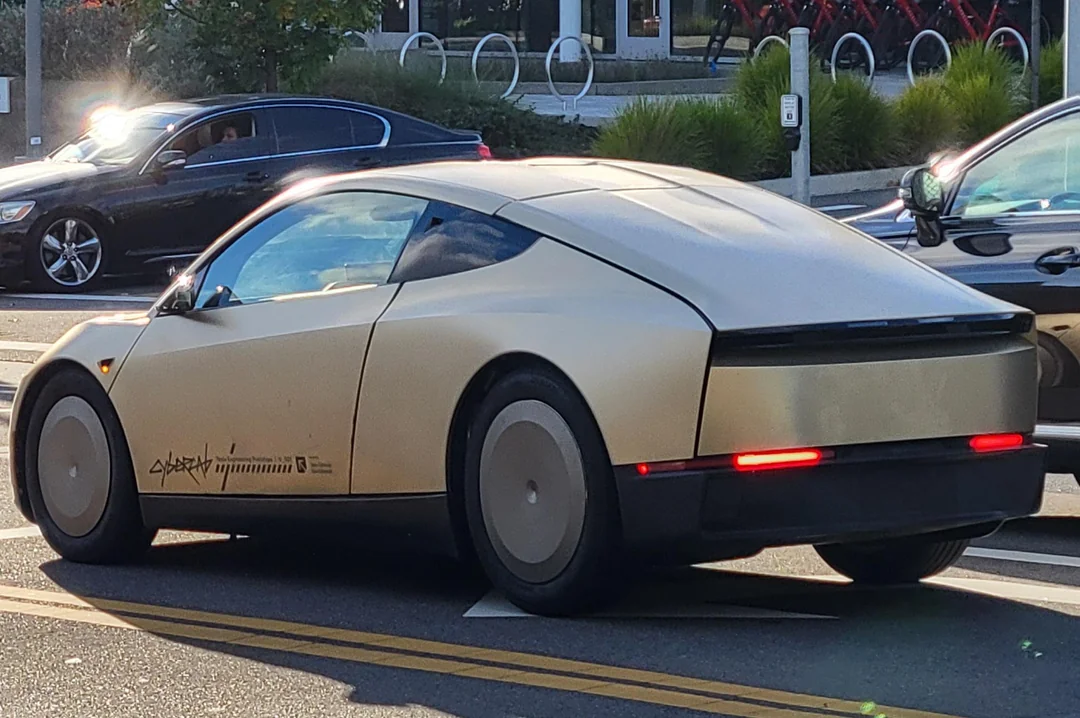
Toyota Connected Europe designer Karim Dia Toubajie has highlighted a particular trend that became evident in Waymo’s Q3 2025 occupancy stats. As it turned out, 90% of the trips taken by the driverless taxis carried two or fewer passengers.
These observations all but validate Tesla’s controversial two-seat Cybercab strategy, which has caught a lot of criticism since it was unveiled last year.
Toyota designer observes a trend
Karim Dia Toubajie, Lead Product Designer (Sustainable Mobility) at Toyota Connected Europe, analyzed Waymo’s latest California Public Utilities Commission filings and posted the results on LinkedIn this week.
“90% of robotaxi trips have 2 or less passengers, so why are we using 5-seater vehicles?” Toubajie asked. He continued: “90% of trips have 2 or less people, 75% of trips have 1 or less people.” He accompanied his comments with a graphic showing Waymo’s occupancy rates, which showed 71% of trips having one passenger, 15% of trips having two passengers, 6% of trips having three passengers, 5% of trips having zero passengers, and only 3% of trips having four passengers.
The data excludes operational trips like depot runs or charging, though Toubajie pointed out that most of the time, Waymo’s massive self-driving taxis are really just transporting 1 or 2 people, at times even no passengers at all. “This means that most of the time, the vehicle being used significantly outweighs the needs of the trip,” the Toyota designer wrote in his post.
Cybercab suddenly looks perfectly sized
Toubajie gave a nod to Tesla’s approach. “The Tesla Cybercab announced in 2024, is a 2-seater robotaxi with a 50kWh battery but I still believe this is on the larger side of what’s required for most trips,” he wrote.
With Waymo’s own numbers now proving 90% of demand fits two seats or fewer, the wheel-less, lidar-free Cybercab now looks like the smartest play in the room. The Cybercab is designed to be easy to produce, with CEO Elon Musk commenting that its product line would resemble a consumer electronics factory more than an automotive plant. This means that the Cybercab could saturate the roads quickly once it is deployed.
While the Cybercab will likely take the lion’s share of Tesla’s ride-hailing passengers, the Model 3 sedan and Model Y crossover would be perfect for the remaining 9% of riders who require larger vehicles. This should be easy to implement for Tesla, as the Model Y and Model 3 are both mass-market vehicles.
